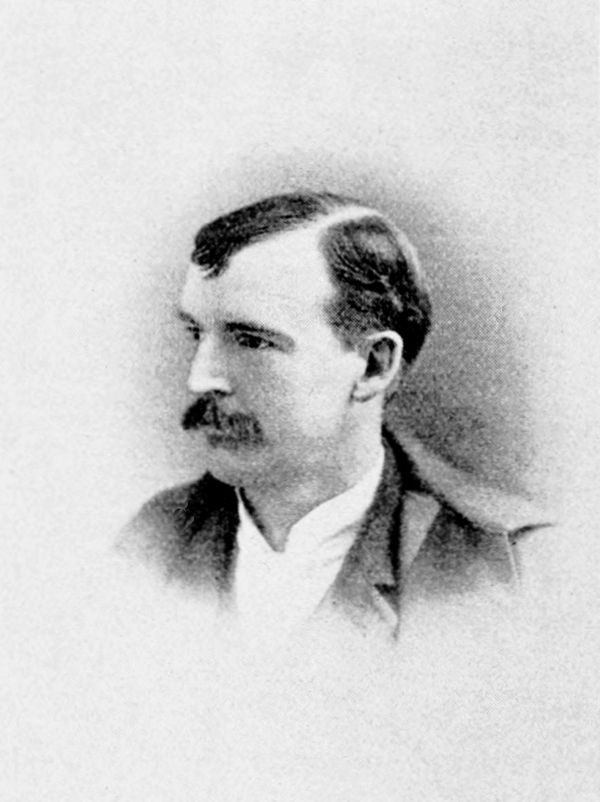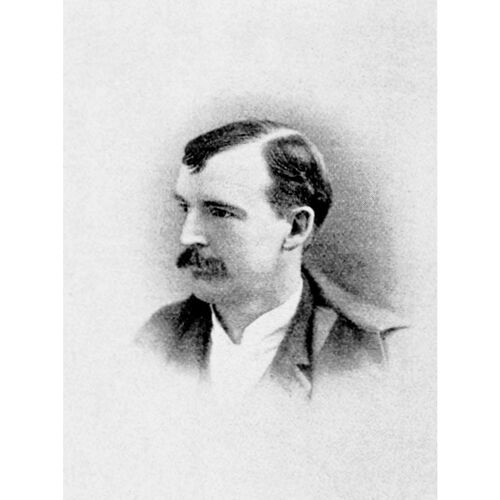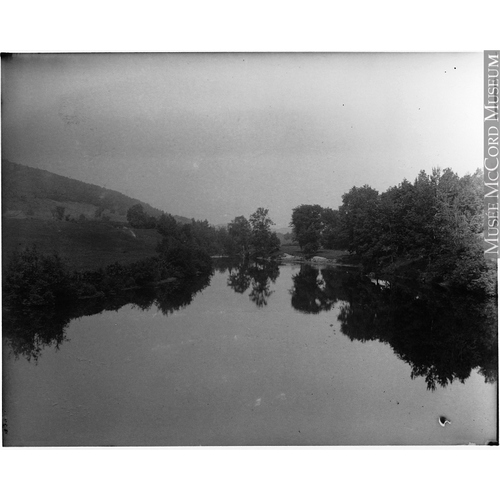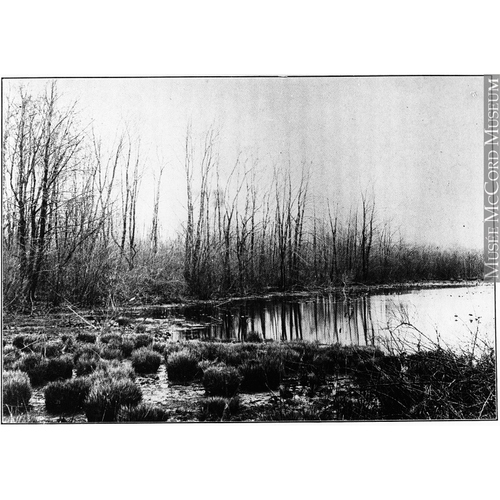
Source: Courtesy of Wikimedia Commons
PENHALLOW, DAVID PEARCE, botanist, palaeobotanist, professor, author, and editor; b. 25 May 1854 in Kittery Point, Maine, son of Andrew Jackson Penhallow and Mary Ann Pickering; m. May 1876 Sarah A. Dunlop of Amherst, Mass., and they had one son; d. 20 Oct. 1910 aboard the Lake Manitoba when travelling from Montreal to Liverpool.
David Pearce Penhallow belonged to a prominent old family of Portsmouth, N.H. In 1873 he graduated bs from Massachusetts Agricultural College in Amherst, where his lifelong interest in botanical research had been kindled by his mentor, William Smith Clark. Both Clark and Penhallow followed the trail blazed by the “new school of botanical science” which, as Penhallow explained, placed emphasis on anatomy and physiology in the aftermath of Charles Darwin’s theory of evolution by natural selection. In particular, he admired the work of German botanist Julius von Sachs, who, he believed, “opened up” for his generation of botanists “an entirely new vista” of research opportunities and methods of study in plant physiology. In this tradition Penhallow cooperated with Clark in reconstructing the classic experiments of English physiologist Stephen Hales on the movement of sap in plants.
Penhallow accepted Clark’s teaching of botany as a useful discipline which formed “the real foundation” of scientific agriculture. In 1876 he accompanied Clark to Japan to help establish the Imperial College of Agriculture at Sapporo. He took up the position of professor of botany and chemistry there, and after Clark’s departure in 1877 he served as acting president of the college in 1879–80. Penhallow enjoyed much credit for organizing scientific activities in Japan, and he would maintain contact with Japanese scholars throughout his career. He also brought important scientific information back to North America. Penhallow had travelled through the Japanese archipelago and become the first Westerner to live among the isolated Ainu. He assembled an important private collection of photographs and published his ethnological data in various scientific periodicals of North America. As a botanist, he noted the unusual trees of Japan. After returning to North America in 1880, he served as an assistant to Harvard botanist Asa Gray, who applied Penhallow’s knowledge of Japanese plants to his own theories about the geographical distribution of northern plants. Penhallow continued the experimental work he had begun earlier with Clark, and in 1881 he addressed the American Association for the Advancement of Science on the “Phenomena of growth in plants.” He also supported Clark’s enthusiasm for the establishment of experimental agricultural stations based on the German model. In 1882 he left Harvard to become a botanist and chemist at Houghton Farm Experiment Station, Houghton, N.Y.
When the station closed the following year, Penhallow’s life took another unexpected turn. At the same time John William Dawson*, principal of McGill College, Montreal, consulted Gray about candidates to fill the chair of botany vacant since the death of James Barnston* in 1858. Penhallow was appointed lecturer on Gray’s recommendation. He continued to pursue his research in plant physiology and pathology, and was promoted professor in 1885. His contact with Dawson’s work in geology and palaeontology broadened his interests to include the relatively new discipline of palaeobotany, the study of fossil plants. Penhallow conducted microscopic analyses of plants from the Devonian period found by the Geological Survey of Canada in the Gaspé peninsula. These analyses settled a long-standing scientific debate which resulted in the reclassification in 1889 of Nematophytons (which Dawson had called Prototaxites in 1856) as ancestors of modern algae rather than of forest vegetation, as Dawson had originally thought. Penhallow became a leading authority on fossil plants from the Cretaceous and Tertiary periods, including those which formed lignite coal in western Canada. In this work with carboniferous plants he followed the approach of German palaeobotanist Heinrich Robert Goeppert in Uber die Entstehung der Steinkohlen aus Bslanzen (Düsseldorf, Germany, 1848). Penhallow’s expertise lay not only in the careful and detailed description of fossil specimens, but also in his ability to trace their genetic relations to modern types. In 1897 he was appointed with Dawson to form an ongoing committee of the British Association for the Advancement of Science on the Pleistocene flora and fauna of Canada. The committee reported annually until 1901.
Penhallow’s most original contribution to palaeobotany was his painstaking application of Goeppert’s methods to the microscopic analysis of fossil conifers. During the 1880s he published some preliminary results of these investigations in the Transactions of the Royal Society of Canada and in the American Naturalist (Boston). His important monograph on the subject, A manual of the North American gymnosperms, appeared in 1907. Like Goeppert, Penhallow studied palaeobotany with both theoretical and practical goals. He strove to ascertain genetic affinities between fossil and modern forms of conifers, as well as structural variations which would help explain relative differences in strength among coniferous woods as building materials. In keeping with his early training, he always gave precedence in his analyses to internal structures over external morphology. He is recognized as one of the first to interpret the evolutionary sequence of conifers in physiological terms. This anatomical approach provided verification of taxonomic decisions that had traditionally been based on less stringent morphological criteria.
Penhallow showed considerable administrative ability and participated in a wide range of organizations. He belonged to numerous botanical, agricultural, and natural history societies and presided over the Botanical Society of America (1888–92), section iv of the Royal Society of Canada (1896–97), the Society of Plant Morphology and Physiology (1899), the Natural History Society of Montreal (1902), and the American Society of Naturalists (1908–9). He served as vice-president of both the botanical section of the British Association for the Advancement of Science (1897) and section G of the American Association for the Advancement of Science (1908–9). In addition, having helped found the Montreal branch of the American Folk-Lore Society, Penhallow was appointed in 1897 to the British Association’s committee on Canadian ethnology, whose activities he chaired after the death of George Mercer Dawson in 1901. The committee functioned in cooperation with a parallel one sponsored by the Royal Society of Canada until 1904 and also chaired by Penhallow.
Besides his promotion of scientific research, Penhallow found time to publish accounts of the history of botany in Canada. He also edited the Canadian Record of Science (Montreal) from 1888 to 1900 and acted as associate editor for the American Naturalist from 1897 to 1907, as well as palaeobotanical editor for the Botanisches Centralblatt (Kassel and Jena, Germany) for the years 1902–7. He was a prime mover in the establishment of a botanical garden in Montreal in 1897. A trustee of the Marine Biological Laboratory at Woods Hole, Mass., Penhallow worked through both the British Association and the Royal Society of Canada to persuade the Canadian Department of Marine and Fisheries to establish similar stations, and he directed the Atlantic Biological Station at St Andrews, N.B., from 1907. That same year he published an important paper documenting the steady recession of New England marsh lands, and he chaired the Association of American Biological Research Stations in 1908–9. Penhallow was a director and the secretary of the board of management of the Marine Biological Stations of Canada when he died of natural causes in 1910. He had allegedly suffered a breakdown from overwork a year earlier.
Penhallow had turned down offers of other positions in order to remain at McGill University. After he earned a bsc from Boston University in 1888, McGill awarded him both a bsc and an msc in 1896, and finally a dsc in 1904, naming him Macdonald professor of botany. His career is remarkable for his work as an outstanding North American plant physiologist and palaeobotanist in the early decades after Darwin. Penhallow pioneered newer, more sophisticated research methods in natural sciences at a time when older morphological approaches still held sway in most Canadian universities.
Many of David Pearce Penhallow’s publications are listed chronologically in Science and technology biblio. (Richardson and MacDonald). Among the more important works it does not include are several papers that appeared in the RSC Trans.: “A review of Canadian botany from the first settlement of New France to the nineteenth century,” 1st ser., 5 (1887), sect.iv: 45–61, and its sequel, “A review of Canadian botany from 1800 to 1895,” 2nd ser., 3 (1897), sect.iv: 3–56; “On Nematophyton and allied forms from the Devonian (Erian) of Gaspé and Bay des Chaleurs,” intro. J. W. Dawson, 1st ser., 6 (1888), sect.iv: 27–47; and “Observations upon some structural variations in certain Canadian Coniferæ,” 12 (1894), sect.iii: 19–41.
Penhallow explained his approach to botany in his article “William Smith Clark; his place as a scientist and his relation to the development of scientific agriculture,” Science (New York), new ser., 27 (January–June 1908): 172–80. Some of his personal correspondence can be found in the J. W. Dawson papers at MUA, MG 1022.
The best accounts of Penhallow’s career are the obituary notices in RSC Trans., 3rd ser., 5 (1911), proc.: vii–x, and in Botanical Gazette (Chicago), 51 (January–June 1911): 142–44 (prepared by E. C. Jeffrey, with portrait). Useful accounts also appear in Canadian men and women of the time (Morgan; 1898), the Globe, 27 Oct. 1910, and the London Times, 27 Oct. 1910: 11.
Cite This Article
Suzanne Zeller, “PENHALLOW, DAVID PEARCE,” in Dictionary of Canadian Biography, vol. 13, University of Toronto/Université Laval, 2003–, accessed December 17, 2025, https://www.biographi.ca/en/bio/penhallow_david_pearce_13E.html.
The citation above shows the format for footnotes and endnotes according to the Chicago manual of style (16th edition). Information to be used in other citation formats:
| Permalink: | https://www.biographi.ca/en/bio/penhallow_david_pearce_13E.html |
| Author of Article: | Suzanne Zeller |
| Title of Article: | PENHALLOW, DAVID PEARCE |
| Publication Name: | Dictionary of Canadian Biography, vol. 13 |
| Publisher: | University of Toronto/Université Laval |
| Year of publication: | 1994 |
| Year of revision: | 1994 |
| Access Date: | December 17, 2025 |





